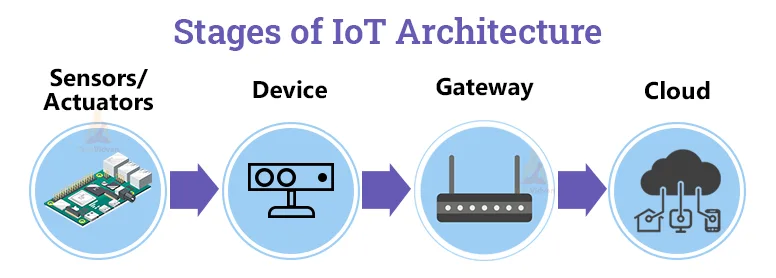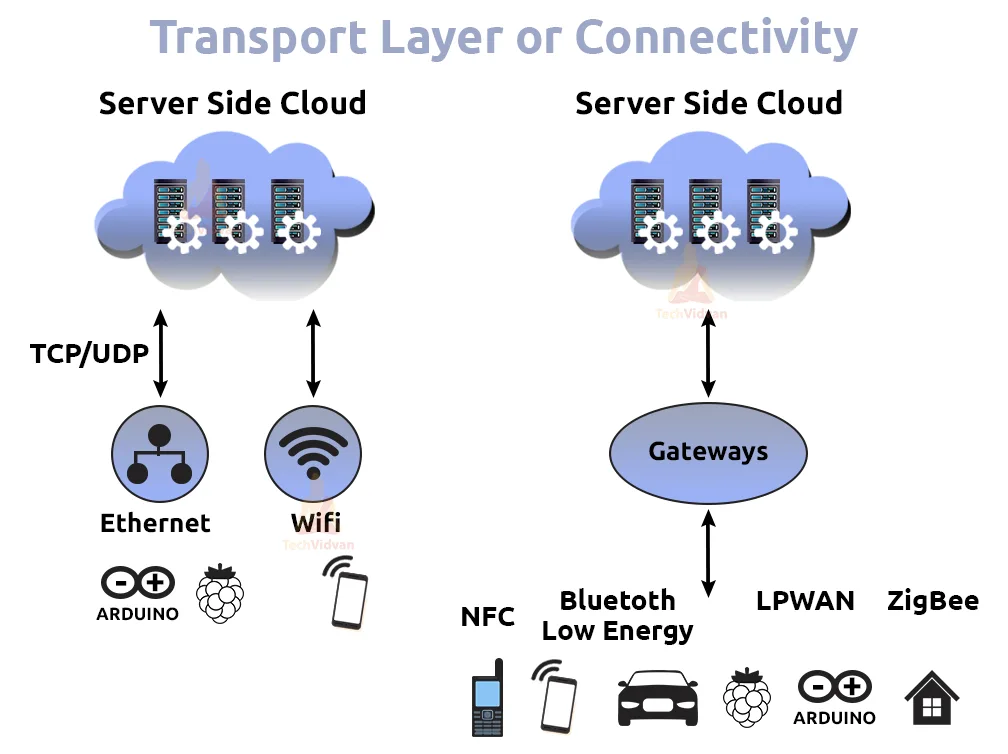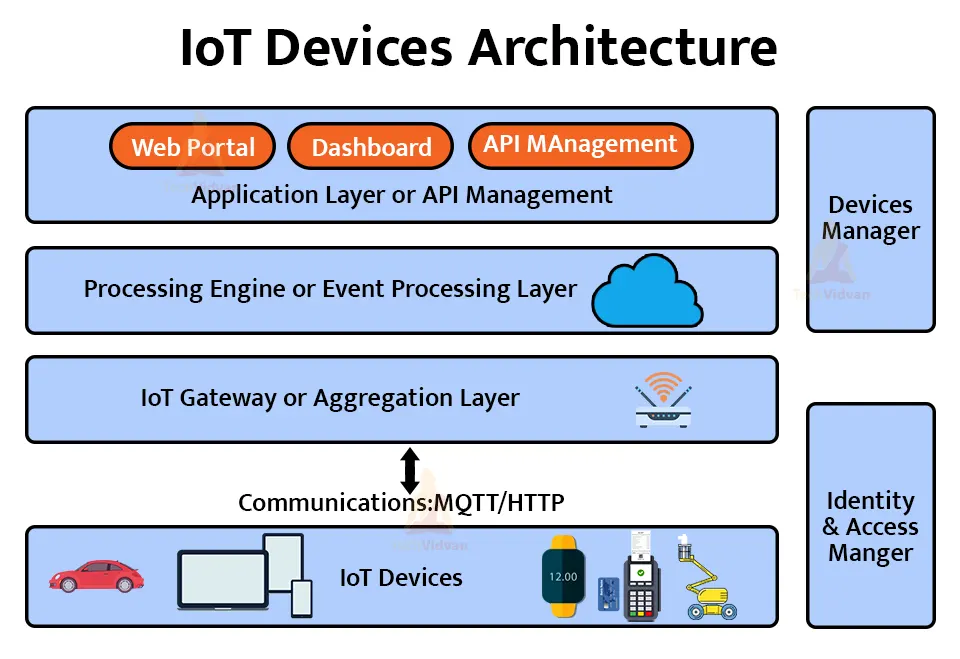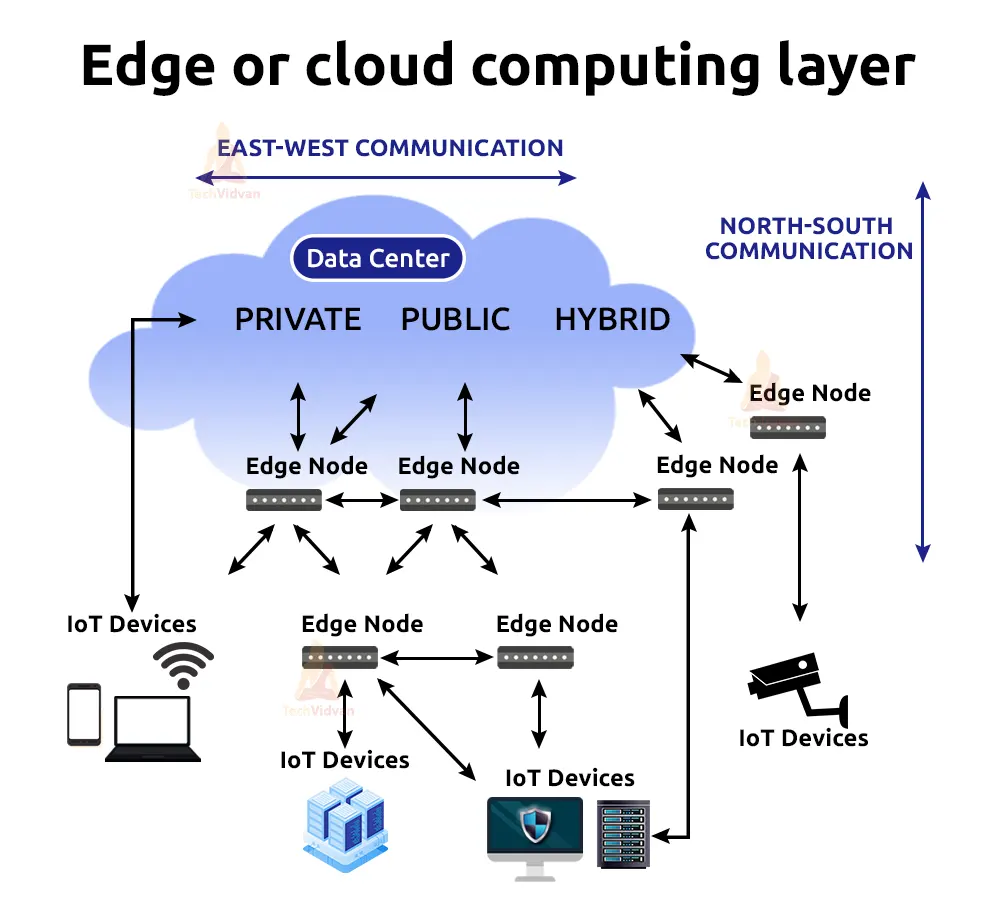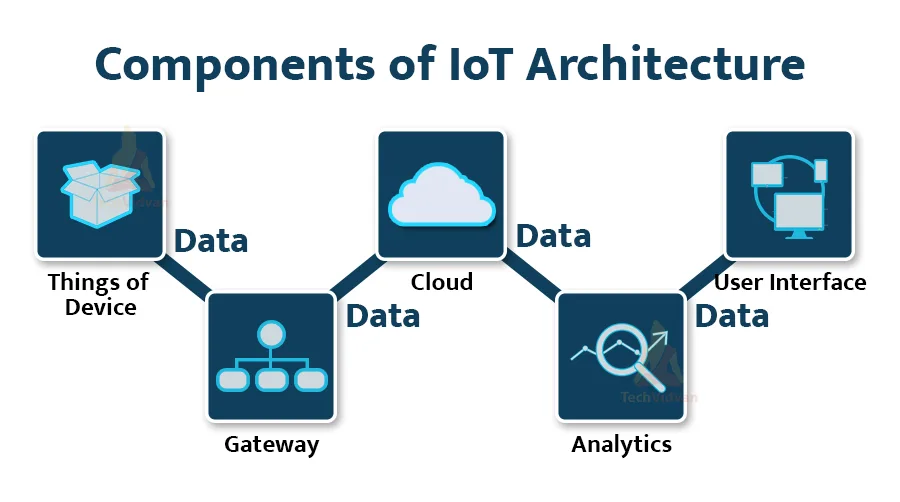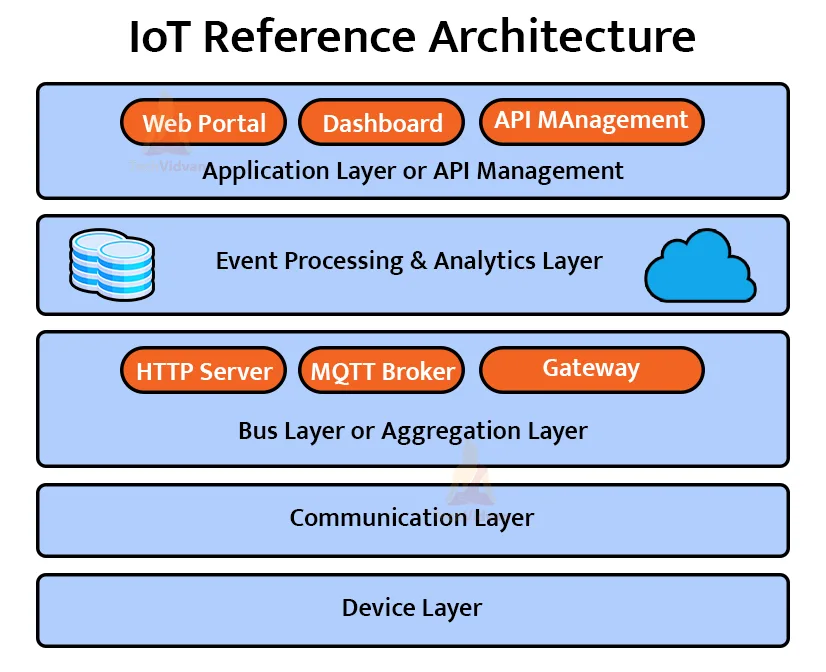Architecture of IoT
In this article we will review the general definition of Iot, we will then look further into Iot architecture. We will look into a reference architecture model and we will learn how to connect two different Architectures.
What is Iot?
The Internet of Things is shaping the way we live our lives. It is doing so by changing the functionality of devices. In the modern world, not only are computers and mobile devices connected to the internet but innate objects such as TVs, Geysers, Microwaves, Cameras, Sensors, Air conditioners can also store and transfer data.
Until recently, the internet helped people connect with one another, but now, with the discovery of the Internet of Things, appliances can be connected to one another by sensing the surroundings around them.
Let’s use a scenario to explain this out:
- When your alarm goes off in the morning, a smart coffee machine with Iot automatically turns on and a hot cup of coffee awaits you at the kitchen counter.
- Suppose you go for a morning walk, IoT in geysers heats the water up and IoT present in the microwave heats up your meal.
- By the time you come back from your walk; all devices would have performed their designated tasks.
What if I told you all this and so much more is possible with the press of a button? Crazy right!
IoT architecture
Iot architecture is the flow of information or data from the sensors to the large server clouds. The sensors are attached to the “things” and they take in information from the surroundings. Large cloud servers perceive, store and process the incoming data to generate necessary outputs. Data is sent back through the clouds, to the “things” to generate a chain reaction.
When we involve huge amounts of data into a network framework, there must be a proper architecture to control the data flow, to send and receive signals, to perform computations and to handle storage.
When we talk about the IoT ecosystem, there is no specific architecture that is agreed upon universally. Every production company has their own private guidelines based on their own requirements and necessities. The generic Iot architecture divides into three fundamental layers.
Usually, when we build a model architecture we must keep in mind that we fit in a wide range of possibilities. Different industries have different requirements and based on these the Architecture is built.
Thus, a general architecture must be a generic pattern that fits into the basic requirements of most of the users. The accepted architecture must ensure that it assists various kinds of protocols and network applications.
In addition, the architecture must check in standard requirements such as security, portability, reliability and structure to ensure protection of the data received.
Stages of IoT Architecture
The designing of the contents of an Iot system is known as the IoT architect. It works to deliver services through a network of Iot devices and servers.
The following are the stages of an IoT architecture:
Stage 1: Perception Layer
First, we have the perception layer that contains Iot devices such as sensors, actuators and machines that have the capacity to sense, calculate and connect to other devices. Sensors sense physical changes in the surroundings and gather information. This layer can be called the client side as this layer fits into the clients location or address.
The collected information passes on to the aggregation layer or the Iot gateway. This layer combines and computes the data. Operators control this layer and this layer involves servers.
Stage 2: Transport Layer or connectivity
Basically, this layer transports information. It transports physical data from sensors and IoT devices to clouds and servers. It then transports back generated responses back to the appliances. The transportation takes plays through a network or via gateways.
The use of various technologies helps in the transportation of data. The most common ones are WiFi, ethernet, Zigbee, Bluetooth, LoRa and cellular networks.
Stage 3: Event Processing Layer
The next layer is established on cloud and it is called the event processing layer. It has various algorithms and data calculation code written in it and it processes the information obtained from the sensor layer. It is responsible for collecting all data and information coming from various IoT devices.
Stage 4: API Management Layer
The final layer is the API management layer or the application layer. This layer is the interface between the third party applications and infrastructure or users. Device managers, identity and access managers which provide safety and security back the entire system at every stage.
This layer generally connects the users or clients with the operators or engineers.
Edge or cloud computing layer
Fog computing stores the huge amount of data coming from the above layers. This method analyses the data to modify the real time data.
Business Layer
Most business models are adapting to IoT technology to optimize their business strategies. And thus IoT controls a large part of any business cooperation today. The information that IoT devices collect gets sent to businesses who then manufacture products based on the intel they obtain. The data also gives an insight on what users use and to create more products accordingly. Business layer is a whole separate layer in the IoT architecture.
Security Layer
In IoT devices, large amounts of data transfers from one point to another. Where there is constant data transmission on such a huge scale, there must be a way to ensure that the data is safe and secure. Or else, hackers might get access to private information which can result in huge losses.
For example, if you live in a smart home that uses IoT technology to secure the gates. If a hacker hacks the encryption at the gates, the hackers can easily get access to the rest of the device and in fact to the entire house. This puts the lives of the user under danger.
To ensure user safety IoT security is a whole nother topic. It involves device security, connection security and lastly cloud security.
Edge IT
This is a crucial layer in the IoT architecture. This layer acts on the data that the Iot devices store and collect. It analyses the data for further processing. It makes relevant decisions to generate adequate outputs. This layer is usually situated in remote places away from the end user and function to the full capacity. Edge computing is done on gateways, servers and constrained nodes.
Components of IoT architecture
An IoT architecture mainly consists of the following components:
1. Sensing, embedded components: This layer provides accurate and credible data. It collects information from the surroundings.
Sensors sense or detect even the slightest changes in the environment. Whereas, actuators respond or act on the signals they receive. For example, temperature control in smart thermostats.
2. Connectivity: Networking, communication and connectivity are the fundanets of any Iot ecosystem. Without device communication and connectivity, there is in fact no IoT. IoT protocols transfer data from one place to another. The most common wireless protocols are WiFi, Zigbee, LoRa and cellular etc.
Gateways are a mode through which the data passes to reach the cloud or servers. Gateways provide security by limiting unauthorized access.
3. IoT cloud: Cloud stores all the incoming data. Here data processing takes place with the help of data analysis and actions are performed on the data to generate a response in the system. Edge computing is done when there is large amounts of incoming data from the user.
4. Data management: This is a proper mechanism that stores the data and remembers information for future responses.
Regardless of any IoT project, IoT uses some common components:
1. Devices
2. Connectivity
3. Platform
4. Data analytics
5. Applications
A Reference Architecture
The following reference architecture can provide a detailed explanation:
The device layer is the main section which contains various applications that contain sensors such as the Bluetooth via mobile phones, zigbee via zigbee gateway or the raspberry pie that is connected to Ethernet. These devices are together connected to the communication layer. Both layers generate a large amount of data and information.
Next, the bus layer or the aggregation layer forms a bridge between the data and the communication layer. This layer contains HTTPS server, MQTT broker and it aggregates and combines information via gateway.
The event processing layer drives the data and transforms the data generated. The data gets stored in the databases.
We create a web based engine to interact with other APIs with the help of client layers. This layer contains the dashboard which provides a view of the functions that can be performed. This layer communicates outside the network.
How can we connect two or more Architecture together?
One architecture can work with another architecture using device managers. The device manager communicates with devices through various protocols. The identity and access layer is capable of providing cyber security.
The most common Iot Reference framework is ISO30141. It provides commonly used vocabulary, reusable designs, best practices and best safety practices.
Summary
In this article we understood a generalized definition of the Internet of Things. We saw the architecture and universally accepted basic layers and stages of Iot. We then cited a reference architecture to get an idea about how the data processing takes place. Finally, we looked into how two different architectures can be connected.

